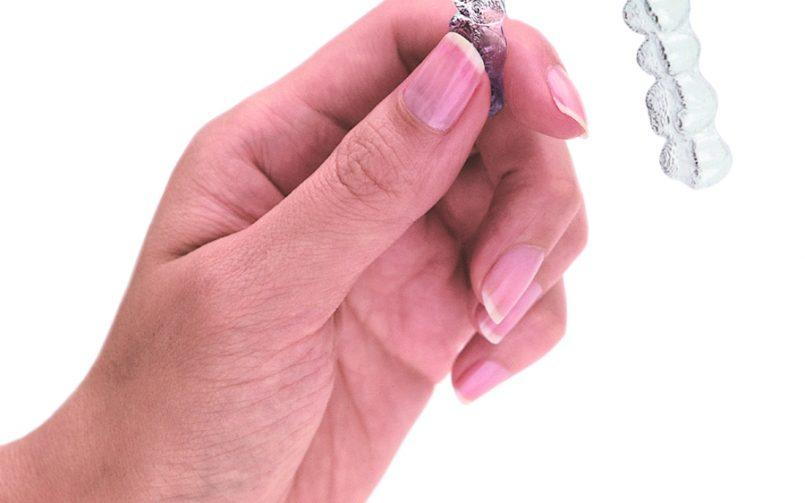
Chances are you are either considering Invisalign or have already started the treatment process as recommended by your dentist or orthodontist. Whatever the case may be, it is essential that you understand how Invisalign works.
This article provides answers to some of the most common questions that patients ask about Invisalign as a method of correcting dental malocclusion issues. After reading the information within this article, you can schedule an appointment with Dr. Emmy Le to help you decide if Invisalign is the best option for you.
This article is written in a question and answer method and divided into five sections for an easy to read format.
The five sections are:
- Description of Invisalign and how it works
- Benefits of Invisalign
- Invisalign Treatment Process
- Care for aligners
- Cost of Invisalign treatment
If you have any questions that are not covered within the scope of this article, then you can also contact Dr. Emmy Le for further help.
Description of Invisalign and how it works
FAQ: What materials are used to make aligners? How does it work?
Answer: Aligners are designed to be virtually invisible and are made using a thermoplastic material specially created to aid a patient’s Invisalign treatment. A patient who requires Invisalign treatment would have a series of aligners custom-made for them. These aligners would help the patient move their teeth in a specific sequence determined by the dentist or orthodontist.
FAQ: How can aligners help to straighten teeth?
Answer: Aligners are typically changed every one or two weeks. With each new set of aligners, the teeth progressively move to the desired position. Following your dentist’s recommendation, your series of custom-made aligners place your teeth in the right position.
Benefits of Invisalign
FAQ: How would the Invisalign process benefit me?
Answer: The benefits of Invisalign cannot be highlighted without comparing the procedure to other alternatives.
As earlier stated, the aligners used for the Invisalign process are virtually invisible, such that no one can tell that you are undergoing any treatment procedure. Compared to other alternatives, Invisalign is a more seamless fit with the patient’s lifestyle. Unlike traditional braces, a patient can remove Invisalign aligners to eat or drink whatever they want, as well as brush and floss. For the best results and a timely outcome, aligners should be worn for 20 to 22 hours per day.
Unlike braces, which can cause mouth irritation due to metal brackets and wires, Invisalign has no wires or metal brackets thus making the aligners a better option for comfort.
Patients also spend less time during routine visits to the dentist because with Invisalign, there are no adjustments, tightening or changing of wires and brackets.
Invisalign Treatment Process
FAQ: What is the duration of the treatment process?
Answer: The duration of the Invisalign treatment is dependent on how much tooth movement needs to be done to correct the malocclusion and straighten the teeth. Very minor tooth movements can be treated in as little as 6 months. Treatment time can extend closer to 18 months to 2 years for the more severe cases. The duration of your treatment can only be determined by a dentist or an orthodontist.
FAQ: Can any dentist treat me with Invisalign?
Answer: Patients are advised to consult only dentists who have attended and completed specialized instructional sessions that make them trained Invisalign Providers.
FAQ: Do I have to wear my aligners all day long?
Answer: For optimal results, it is advised that patients wear their aligners for 20 – 22 hours daily but can take them off when eating, drinking anything besides room temperature water, flossing or brushing.
FAQ: How often do I have to visit my Invisalign dentist or orthodontist?
Answer: Appointments are scheduled by your dentist or orthodontists and are often once every 4-6 weeks. These visits help your doctor keep a track record of your dental restructuring progress.
FAQ: Will this treatment method be discomforting?
Answer: Compared to braces, Invisalign is more comfortable and patients experience less anxiety. In the early days of wearing a new aligner, you may feel some tightness or pressure – this discomfort is an indicator that the Invisalign treatment is working to move the patient’s teeth to the right position.
FAQ: Will my speech be affected when I wear the aligners?
Answer: Like other orthodontic treatments, patients who wear aligners may talk with a slight lisp for the first few days but over time, as patients get used to having aligners in their mouth, this speech impairment should disappear.
Care for Aligners
FAQ: How do I clean my aligners?
Answer: Brushing and rinsing aligners in lukewarm water is an easy way patients can clean their aligners. Ask about the Invisalign Cleaning system which is a great option for cleaning aligners.
Cost of Invisalign Treatment
FAQ: How much would Invisalign cost?
Answer: There are many factors that determine the cost of a patient’s Invisalign treatment process –some of which are:
- Patient’s Location
- Treatment Duration
- The severity of the patient’s teeth displacement etc.
In most cases, the cost of Invisalign treatment is not too far off from the cost of traditional braces. In the end, the dentist or orthodontist is the best person to answer your questions.
Got any questions that are not covered within the scope of this article? Please contact Dr. Emmy Le for further help.
Get your beautiful smile on!
